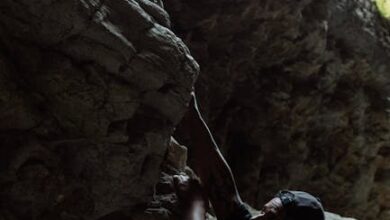Best Gluten Free Buns

Finding the perfect gluten-free bun can feel like searching for a unicorn. As someone who loves a good burger (or sandwich, or BBQ!), I understand the struggle. We want a bun that holds its shape, tastes great, and doesn’t crumble into a million pieces with the first bite. Luckily, the gluten-free market has exploded with options, and there are some truly fantastic buns out there. Let’s dive into some of the best choices to elevate your gluten-free meals!
What Makes a Great Gluten-Free Bun?
Before we jump into specific brands, let’s talk about what to look for in a top-notch gluten-free bun. Texture is key. Nobody wants a gummy or overly dry bun. It should be soft, slightly chewy, and able to withstand the weight of your burger or fillings without falling apart. Taste is also important. A good gluten-free bun should complement, not distract from, the flavors of what you’re eating. It shouldn’t have a strong, artificial aftertaste. Finally, ingredients matter. Look for buns made with high-quality gluten-free flours and minimal additives.
My Top Picks for Gluten-Free Buns
After years of testing (and many delicious meals!), here are some of my favorite gluten-free bun options:
Canyon Bakehouse Gluten-Free Hamburger Buns: These are consistently a winner in my book. They have a soft, slightly sweet flavor and a texture that’s surprisingly similar to traditional wheat buns. They hold up well to grilling and toasting, and they’re widely available in most grocery stores. They’re also a great option for those with other allergies as they are also dairy, soy, and nut free!
Schar Gluten-Free Hamburger Buns: Schar is a well-known and trusted brand in the gluten-free world, and their hamburger buns don’t disappoint. They’re a bit denser than some other options, but they’re still soft and flavorful. They’re also shelf-stable, which is a huge plus if you don’t go through buns quickly. Schar buns are a great pantry staple to have on hand.
BFree Gluten-Free Soft White Rolls: While technically “rolls,” these are perfectly sized for smaller burgers or sandwiches. They are very soft and pliable. What sets BFree apart is the moisture content. They avoid being dry or crumbly, a common problem with gluten-free breads.
Little Northern Bakehouse Gluten-Free Buns: These buns stand out because they are made with whole grains. They’re a great option if you’re looking for a more nutritious gluten-free bun. The texture is still soft and enjoyable, and they have a slightly nutty flavor.
Tips for Enjoying Gluten-Free Buns
Even the best gluten-free buns can benefit from a little extra TLC. Here are a few tips to make sure you have a great experience:
Toast or grill them: Toasting or grilling your gluten-free buns can improve their texture and flavor. It helps to crisp them up and prevent them from becoming soggy. This also adds a bit of warmth to the bun.
Don’t overcrowd them: Gluten-free buns can be a bit more fragile than traditional buns, so be careful not to overload them with too many toppings. This will help them hold their shape and prevent them from falling apart.
Butter or oil them: Adding a little butter or oil to the inside of your buns before toasting or grilling can help to prevent them from drying out. This also adds a bit of extra flavor.
Store them properly: Gluten-free buns can dry out quickly, so it’s important to store them properly. Keep them in an airtight container or bag in the refrigerator or freezer.
Are Gluten-Free Buns Healthy?
The healthfulness of gluten-free buns varies depending on the brand and ingredients. Some gluten-free buns are made with refined flours and added sugars, while others are made with whole grains and natural sweeteners. It’s always a good idea to read the nutrition label and choose options that are low in sugar, high in fiber, and made with wholesome ingredients. Consider them a treat, and focus on a balanced diet with plenty of fruits, vegetables, and lean protein.
Gluten-Free Bun Alternatives
If you’re looking for a completely gluten-free and grain-free alternative to buns, here are a few creative options:
Lettuce wraps: Large lettuce leaves, like butter lettuce or romaine, can be used as a wrap for burgers or sandwiches. This is a low-carb and refreshing option.
Portobello mushroom caps: Grilled portobello mushroom caps make a hearty and flavorful bun alternative. They’re also a good source of nutrients.
Sweet potato “toast”: Slice sweet potatoes into thick rounds and toast them until they’re tender. Top with your favorite burger or sandwich fillings.
Frequently Asked Questions
Are all gluten-free buns created equal?
No, definitely not! The quality and taste can vary greatly between brands. That’s why it’s important to try different options and find the ones you like best.
Can I make my own gluten-free buns?
Absolutely! Making your own gluten-free buns from scratch can be a rewarding experience. There are many gluten-free bun recipes available online. This allows you to customize the ingredients and flavors to your liking.
Where can I buy gluten-free buns?
Most major grocery stores now carry a variety of gluten-free buns. You can also find them at specialty health food stores and online retailers.
How do I prevent my gluten-free buns from crumbling?
Toasting or grilling them can help prevent crumbling. Also, be gentle when handling them and avoid overfilling them with toppings.
Are gluten-free buns suitable for people with other allergies?
It depends on the specific ingredients. Many gluten-free buns are also free from other common allergens, such as dairy, soy, and nuts. Always check the label to ensure they meet your dietary needs.
Finding the best gluten-free bun is a personal journey. Experiment with different brands and options until you find the ones that you truly enjoy. With the right bun, you can enjoy delicious burgers, sandwiches, and BBQ without compromising on taste or texture. Happy grilling (or sandwich-making)!
Related Posts
| Best Gluten Free Burger Buns |
| Best Gluten Free Hamburger Buns |



